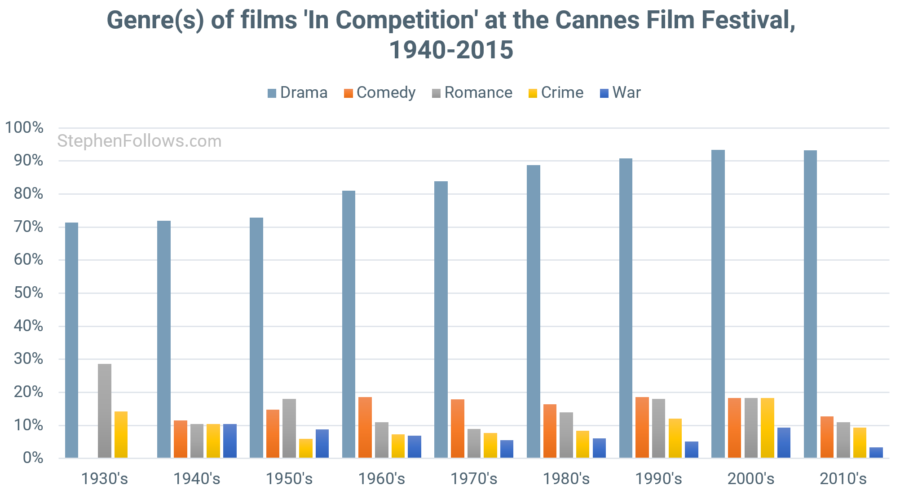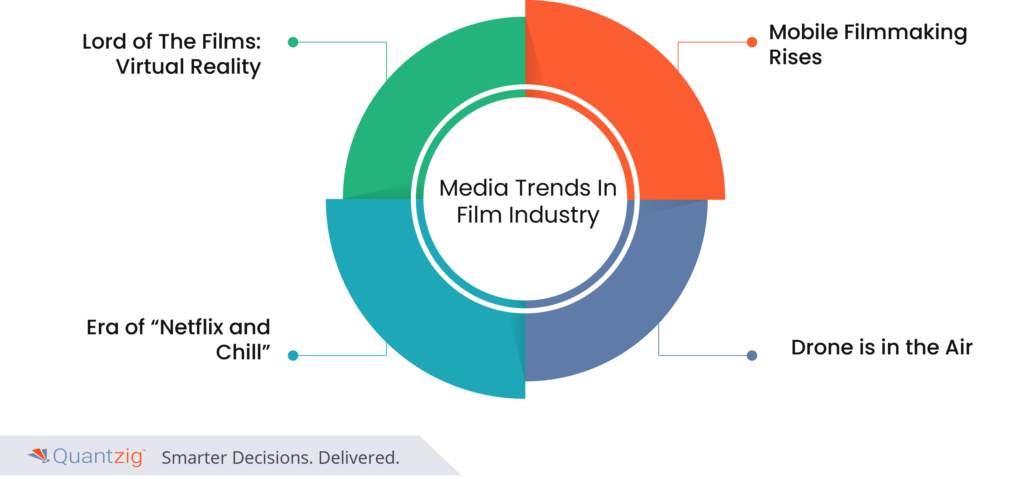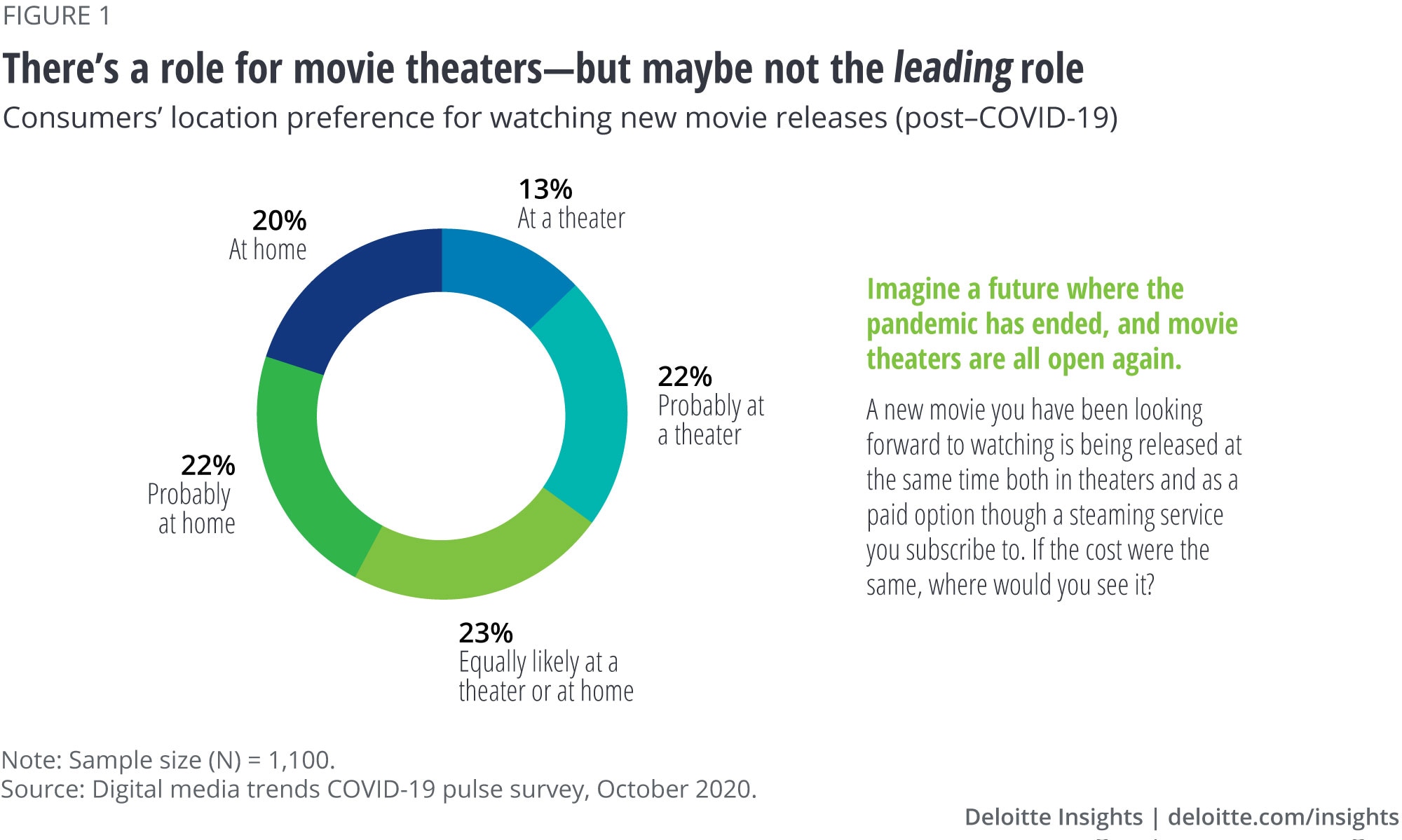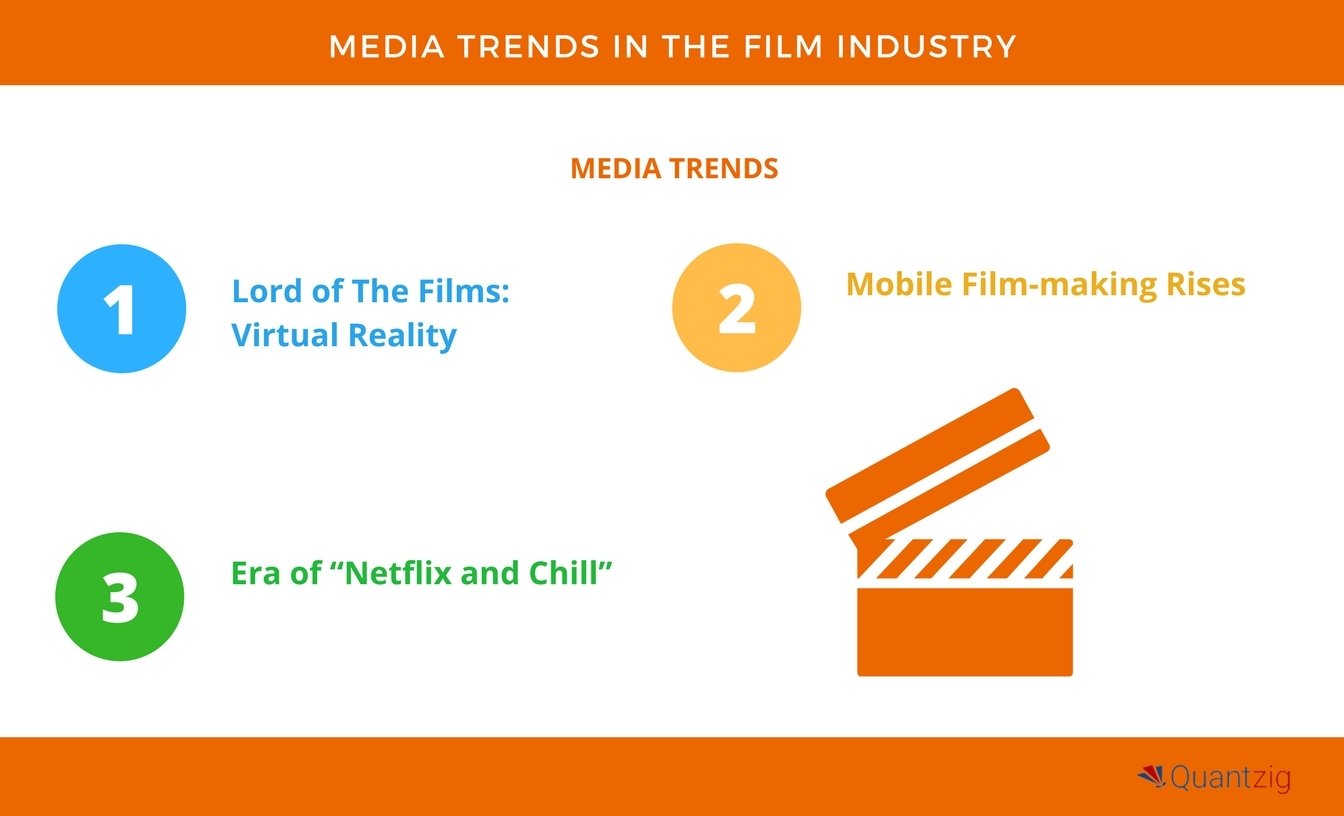Current trends in the film industry include the rise of streaming services and the increasing use of advanced visual effects. Socially relevant storytelling and diverse casting are also gaining prominence.
The film industry is rapidly evolving with significant changes in how movies are produced and consumed. Streaming platforms like Netflix and Disney+ are leading the charge, offering viewers instant access to a vast library of content. Advanced visual effects are pushing the boundaries of what filmmakers can achieve, creating more immersive experiences.
Socially relevant storytelling and diverse casting reflect a growing demand for representation and inclusion in Hollywood. These trends are reshaping the landscape, offering new opportunities and challenges for filmmakers and audiences alike. Understanding these shifts is crucial for anyone interested in the future of cinema.

Credit: stephenfollows.com
Streaming Dominance
The film industry has evolved. Streaming services now dominate the scene. This shift has changed how we watch movies. Theaters are feeling the impact. Let’s explore this trend in more detail.
Rise Of Platforms
Major platforms like Netflix, Disney+, and Amazon Prime lead the way. They offer vast libraries of films and shows. Subscribers enjoy content at their convenience. The rise of platforms has redefined movie watching.
These services often release exclusive content. Viewers can’t find these shows in theaters. The convenience factor is a major draw. People love watching from the comfort of their homes.
Impact On Theaters
Theaters are facing a significant challenge. With more people streaming, theater attendance has dropped. This has led to reduced revenue for cinemas. Theaters are now focusing on unique experiences to attract viewers.
They offer special screenings, premium seating, and gourmet food options. Cinemas are also investing in better technology. Enhanced sound and visuals aim to lure audiences back. Still, the convenience of streaming remains a strong competitor.

Credit: www.quantzig.com
Diversity And Representation
The film industry is evolving rapidly, and Diversity and Representation are at the forefront of this transformation. Audiences demand stories that reflect the world’s rich diversity. Filmmakers are rising to the occasion by offering more inclusive narratives and casting choices.
Inclusive Casting
Inclusive casting is gaining momentum. Filmmakers are casting actors of different races, genders, and backgrounds. This trend ensures that more voices are heard and seen on screen.
- Race and Ethnicity: More films feature diverse racial and ethnic groups.
- Gender: Female leads and non-binary characters are on the rise.
- Ability: Actors with disabilities are getting more roles.
These changes bring fresh perspectives to storytelling. Viewers see themselves reflected in the characters they watch. This leads to higher engagement and satisfaction.
Narrative Shifts
There is a noticeable shift in the types of stories told. Filmmakers are exploring diverse cultural narratives and social issues.
- Cultural Stories: Films showcase traditions and experiences from around the globe.
- Social Justice: Stories address topics like racism, gender equality, and LGBTQ+ rights.
- Real-life Experiences: Biopics and documentaries spotlight diverse individuals and communities.
These narrative shifts offer viewers a broader understanding of the world. The film industry is no longer confined to mainstream stories. It embraces a wide array of voices and experiences.
Technological Advancements
The film industry is evolving rapidly, driven by technological advancements. These innovations are transforming movie-making and viewing experiences. From cutting-edge production techniques to enhanced frame rates, the landscape is changing. This blog post explores the latest trends in film technology.
Virtual Production
Virtual production is a game-changer. This technique combines live-action footage with computer-generated imagery (CGI). It allows filmmakers to visualize scenes in real-time. Directors can see CGI elements while shooting. This creates a seamless blend of real and virtual worlds.
Virtual production uses LED screens and motion capture. Actors perform in front of large LED panels showing virtual backgrounds. This reduces the need for green screens and post-production work. Motion capture helps to create lifelike character movements. This technology is revolutionizing storytelling in films.
| Advantages of Virtual Production | Details |
|---|---|
| Real-time Visualization | Directors can see CGI elements during filming |
| Reduced Post-Production | Less reliance on green screens |
| Enhanced Performances | Actors interact with realistic environments |
High Frame Rate
High frame rate (HFR) technology is enhancing visual quality. Traditional films are shot at 24 frames per second (fps). HFR movies use 48 fps or more. This results in smoother motion and clearer images. HFR reduces motion blur and improves action scenes.
Filmmakers are increasingly adopting HFR. It offers a more immersive experience. Audiences notice the difference. The Hobbit trilogy used 48 fps, setting a new standard. James Cameron’s Avatar sequels will also use HFR. This technology is gaining popularity.
- Benefits of High Frame Rate:
- Smoother motion
- Clearer images
- Reduced motion blur
- Enhanced action scenes
High frame rate is the future of cinema. It provides a richer viewing experience. As more filmmakers adopt this technology, audiences will enjoy better visual quality.

Credit: www2.deloitte.com
Independent Films
Independent films have gained significant popularity. These films often showcase unique stories. They are not backed by major studios. Independent filmmakers enjoy more creative freedom. They bring fresh perspectives to the industry. Let’s dive into the current trends shaping independent films.
Festival Circuit
Film festivals are crucial for independent films. Festivals like Sundance and Cannes spotlight emerging talent. They provide a platform for indie filmmakers. They offer opportunities for distribution deals. Festivals also help films gain critical acclaim.
- Sundance Film Festival
- Cannes Film Festival
- Toronto International Film Festival
- Berlin International Film Festival
These events are essential for networking. Filmmakers meet potential collaborators. They also connect with audiences. Festivals are a launchpad for indie films.
Crowdfunding Success
Crowdfunding has revolutionized film financing. Platforms like Kickstarter and Indiegogo are popular. They enable filmmakers to raise funds directly. Supporters contribute to projects they believe in. This model democratizes film funding.
| Platform | Notable Projects |
|---|---|
| Kickstarter | Veronica Mars, The Babadook |
| Indiegogo | Dear White People, Kung Fury |
Crowdfunding also builds an audience. Supporters become invested in the film’s success. They spread the word and create buzz. This grassroots support can be invaluable.
Franchise Fatigue
In recent years, the film industry has experienced a phenomenon known as Franchise Fatigue. Audiences are growing weary of repetitive storylines and predictable plots. This trend is impacting box office numbers and audience engagement. Let’s delve deeper into this issue by examining reboots, sequels, and the demand for original content.
Reboots And Sequels
Reboots and sequels have dominated the film industry for years. Studios rely on these to capitalize on established franchises. This strategy is losing its charm. Audiences crave fresh, innovative stories rather than recycled plots.
Reboots involve taking an old movie and creating a new version. They aim to attract both new audiences and nostalgic fans. Examples include the recent reboots of Ghostbusters and Jumanji. Despite initial excitement, many reboots fail to meet expectations.
Sequels continue the story of an original film. While some sequels succeed, others fall flat. Endless sequels can dilute the original story’s impact. Franchises like Fast & Furious and Transformers face diminishing returns.
Original Content Demand
Audiences are increasingly seeking original content. They prefer unique stories over familiar franchises. This shift presents an opportunity for filmmakers to innovate and take risks.
Several factors drive this demand for original content:
- Fresh perspectives and diverse voices
- Unique and unpredictable plots
- Creative storytelling techniques
Streaming platforms like Netflix and Amazon Prime are responding to this trend. They invest heavily in original movies and series. This strategy attracts subscribers and keeps content fresh.
Original films like Get Out and Parasite have garnered critical acclaim and commercial success. These successes show that audiences appreciate new and innovative stories.
Filmmakers should focus on creating unique, engaging content. This approach can reignite audience interest and combat franchise fatigue.
| Trend | Impact |
|---|---|
| Reboots | Often fail to meet expectations |
| Sequels | Can dilute original story’s impact |
| Original Content | Garners critical and commercial success |
Sustainability Efforts
The film industry is embracing sustainability efforts to reduce its environmental footprint. These efforts are transforming how movies are made, from sets to production methods. This shift towards eco-conscious practices is reshaping the industry for the better.
Eco-friendly Sets
Production teams are now designing eco-friendly sets. They use sustainable materials and repurpose old props. This reduces waste and conserves resources. Many sets now feature LED lighting, which saves energy.
A popular choice is using recycled wood and metal. These materials are both durable and sustainable. Here’s a quick look at the materials:
| Material | Benefit |
|---|---|
| Recycled Wood | Reduces deforestation |
| Repurposed Metal | Minimizes mining impact |
| LED Lighting | Saves energy |
Green Filmmaking
Green filmmaking practices are gaining traction. These include using digital tools to minimize paper use. Filmmakers are also turning to virtual sets. This avoids the environmental impact of building physical sets.
Transportation is another focus area. Crews use electric vehicles to cut down on emissions. Catering services now offer plant-based meals. This reduces the carbon footprint of food production.
Here are some green filmmaking practices:
- Digital scripts to reduce paper
- Virtual sets to avoid physical waste
- Electric vehicles for transportation
- Plant-based catering options
These practices show the industry’s commitment to sustainability. They highlight how small changes can make a big impact.
Global Box Office Trends
The film industry is constantly evolving, with new trends shaping the landscape. One of the key areas of change is the global box office. This section will explore the latest trends in international markets and the rise of localized content.
International Markets
International markets play a crucial role in the global box office. Films now earn a significant portion of their revenue from overseas. The growing middle class in countries like China and India has increased ticket sales.
Here are some key points about international markets:
- China is the largest international market for films.
- India has a rapidly growing film audience.
- European markets continue to be strong, especially in France and Germany.
Many blockbuster films now cater to international tastes. This strategy includes adding international stars and filming in diverse locations.
Localized Content
Localized content is another trend shaping the global box office. Studios are producing films that resonate with local audiences. This means creating stories that reflect local cultures and values.
There are several benefits to localized content:
- It increases audience engagement and loyalty.
- It boosts ticket sales in specific regions.
- It allows for more diverse storytelling.
Films like “Crazy Rich Asians” and “Parasite” have shown the success of localized content. Studios are now investing more in regional productions.
| Region | Key Trend |
|---|---|
| Asia | Increased investment in local films |
| Europe | Strong demand for diverse content |
| Latin America | Rising popularity of regional stories |
The rise of streaming platforms has also boosted localized content. Services like Netflix and Amazon Prime are investing in local productions. This trend ensures a more global and inclusive film industry.
Audience Engagement
The film industry is evolving quickly. Audience engagement is more important than ever. Modern technology has changed how viewers interact with films. Let’s explore two key trends: Interactive Content and Social Media Influence.
Interactive Content
Interactive content is transforming film experiences. Viewers enjoy feeling part of the story. This type of content includes:
- Choose-your-own-adventure films
- Virtual Reality (VR) experiences
- Augmented Reality (AR) features
These methods increase audience immersion. They make the viewing experience more personal and memorable. Interactive content keeps viewers engaged and eager for more.
Social Media Influence
Social media platforms have a huge impact on films. They help build excitement and anticipation. Filmmakers use social media to:
- Share behind-the-scenes content
- Conduct live Q&A sessions
- Post trailers and teasers
Influencers play a big role in promoting films. Their posts can reach millions of fans. This boosts film visibility and audience engagement.
Social media also allows direct communication with fans. This interaction creates a sense of community. Fans feel more connected to the film and its creators.
Frequently Asked Questions
What Are The Trends In The Film Industry?
Key film industry trends include increased streaming services, diverse storytelling, advanced CGI, virtual reality integration, and global collaboration.
What Are Some Of The Most Recent Changes To The Film Industry?
Recent changes include the rise of streaming platforms, increased use of CGI, and more diverse representation. The shift to digital releases has also grown.
What Is The Future Of The Film Industry?
The film industry will embrace more streaming platforms, virtual reality, and AI-driven content. Theaters will adapt with premium experiences. Independent filmmaking and diverse storytelling will grow.
What Are The Trends In The Post-production Industry?
Trends in the post-production industry include cloud-based workflows, AI integration, real-time collaboration tools, and high-resolution content. Virtual production and remote editing are gaining popularity.
Conclusion
The film industry is evolving with exciting trends like streaming dominance, diverse storytelling, and advanced technology. Staying updated can help filmmakers and enthusiasts adapt and thrive. Embrace these changes to make the most of new opportunities. The future of film promises innovation and creativity like never before.

